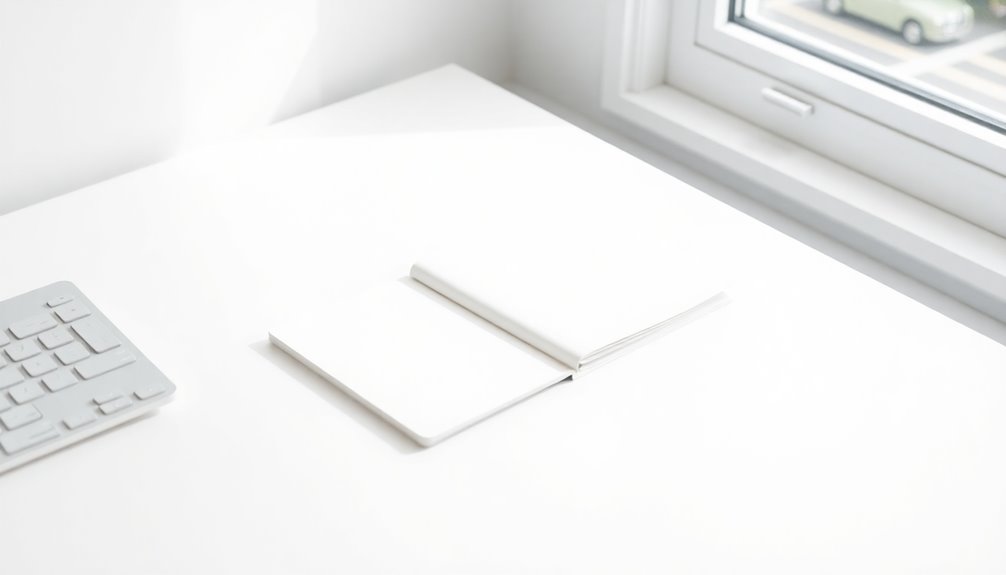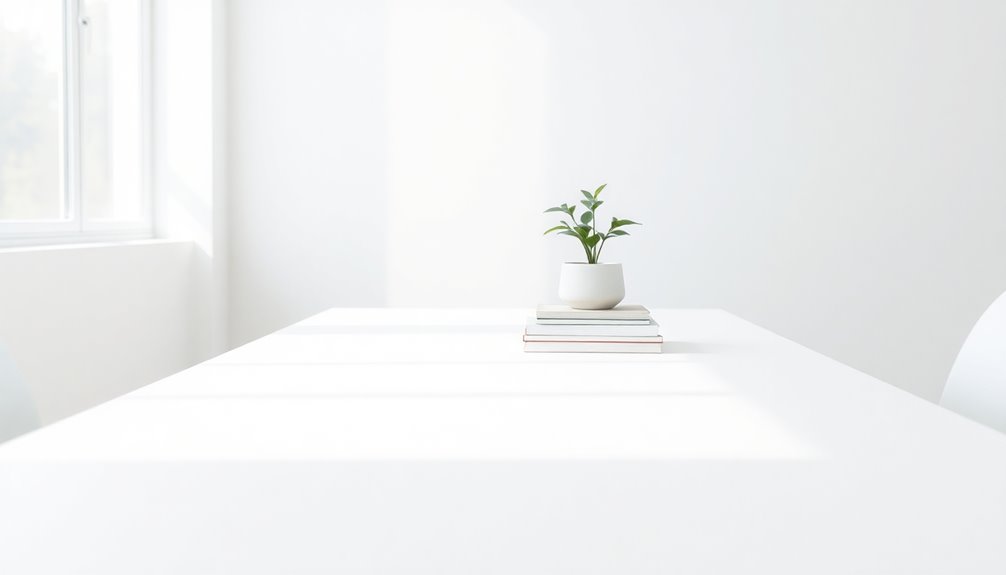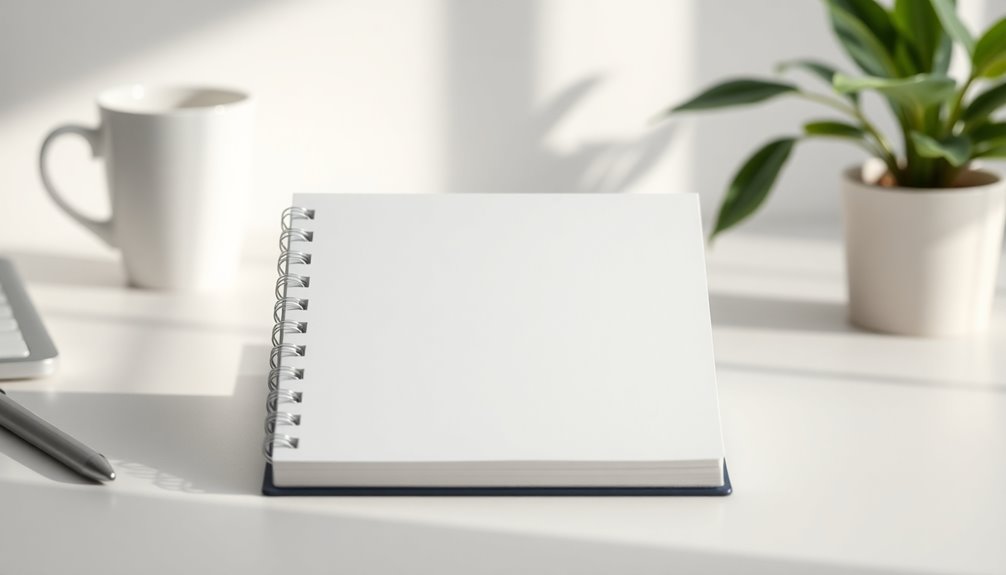White space, or negative space, is the empty area surrounding design elements like text and images. It's essential for readability because it reduces cognitive load, making information easier for you to process. Think of it as breathing room for your eyes. By effectively using both macro and micro white space, you can enhance visual hierarchy and guide your gaze seamlessly through content. This creates a more enjoyable experience, preventing eye strain and boosting comprehension. Understanding how to optimize white space can elevate your designs, and there's much more to discover about its benefits and applications.
Key Takeaways
- White space, or negative space, is the area surrounding design elements that enhances overall readability and reduces cognitive load.
- Macro white space involves larger empty areas, while micro white space focuses on smaller spaces, both crucial for visual hierarchy.
- Adequate white space can improve reading comprehension by up to 20%, making information easier to digest and navigate.
- It provides visual rest, preventing eye strain and cognitive fatigue, ultimately enhancing user satisfaction and engagement.
- Effective use of white space, especially around call-to-action buttons, can boost conversion rates and encourage user interaction.
Definition of White Space

White space, often called negative space, is the empty area that surrounds design elements like text and images. This space can greatly enhance readability by reducing cognitive load, allowing you to focus on the essential visual elements.
White space includes macro whitespace, which refers to larger empty areas around major design elements, and micro whitespace, the spaces between letters, lines, and paragraphs. These empty areas play an essential role in establishing a clear visual hierarchy, guiding your eye movement through the content.
Effective use of white space organizes your layout, making navigation easier and improving comprehension. Studies show that larger margins can boost reading comprehension by about 20%, demonstrating white space's powerful impact on understanding.
Types of White Space

When it comes to design, understanding the different types of white space can make a significant difference in readability and user experience.
Macro white space refers to larger areas around major design elements, like margins and paddings, which help establish the overall layout. In contrast, micro white space involves smaller spaces within text, such as line height and letter spacing, enhancing readability by providing visual separation.
The effective use of white space reduces cognitive load, making it easier for users to digest information. Balancing both types allows for improved eye movement, guiding users through content effortlessly.
Psychological Benefits

Utilizing white space goes beyond aesthetics; it taps into the psychology of how users interact with content.
You'll find that ample white space is important because it reduces cognitive load, allowing you to process information more easily. This enhancement in readability can boost your comprehension by up to 20%, aiding information retention.
White space also offers visual rest, preventing eye strain and cognitive fatigue, which helps improve engagement with the material.
Furthermore, the effective use of white space can elevate user perception, evoking feelings of luxury and sophistication.
Studies show that designs featuring sufficient white space lead to higher user satisfaction and increase the likelihood of return visits, ultimately providing significant psychological benefits.
Impact on User Engagement

Effective design hinges on the strategic use of white space, which directly influences user engagement. Here's how:
- Reduce cognitive load: White space minimizes distractions, allowing you to focus on key content.
- Improve readability: Well-spaced layouts make it easier for you to digest information, enhancing your overall experience.
- Enhance user satisfaction: A visually pleasing design keeps you engaged and encourages interaction with the website or application.
- Boost conversion rates: Clear calls to action stand out, guiding user attention and prompting you to take action.
Best Practices in Design

Three key best practices can enhance your design through the strategic use of white space.
First, prioritize balance by surrounding text and images with adequate space to boost readability and minimize visual clutter.
Second, incorporate consistent margins and padding throughout your graphic design. This creates a unified experience, guiding users' focus across your content seamlessly.
Finally, utilize micro white space, like line height and letter spacing, to enhance text legibility, making it easier for users to scan information quickly.
Don't forget to strategically place white space around call-to-action buttons; this not only draws attention but also increases effectiveness.
Regularly review your designs for white space optimization to guarantee responsive design and satisfaction.
Frequently Asked Questions
What Is White Space and Why Is It Important for Readability?
You might've noticed how some texts just grab your attention while others overwhelm you.
That's where white space comes in. It's the empty areas around text and images that help your eyes move smoothly across the page.
When you use white space effectively, you reduce clutter, making reading easier and more enjoyable.
This not only boosts comprehension but also keeps your audience engaged, making your content more appealing and impactful.
What Is Whitespace and Why Is It Important?
Think of white space as the refreshing change in design; it keeps things from feeling cramped.
It's important because it lets your content shine without distractions. When you use white space effectively, you help your readers navigate through the information effortlessly.
This clarity boosts comprehension and makes your message more engaging.
Fundamentally, it's a design element that's as crucial as the text itself, enhancing both appeal and understanding.
Why Is It Important to Have Blank Space?
Having blank space is important because it helps you focus on the content without feeling overwhelmed.
It reduces visual clutter, making it easier for your eyes to navigate the page. You'll find that with well-placed white space, your reading comprehension improves and you engage more with the material.
Plus, a clean layout can keep your attention longer, enhancing your overall experience and satisfaction with what you're reading.
What Is the White Space?
You've probably noticed areas in design that seem empty but actually serve a purpose. That's white space.
It's the space around text and images that helps organize content and makes it visually appealing.
By incorporating white space, you allow your eyes to rest and focus on what truly matters.
This balance not only enhances readability but also improves your overall experience, making it easier to engage with the information presented.
Conclusion
Now that you understand the importance of white space, you might be wondering how it can transform your own designs. Imagine a layout that draws your audience in, guiding their eyes effortlessly across the page. What if the secret to increased engagement and readability lies in those empty areas? Don't underestimate the power of white space—it could be the game-changer you've been searching for. Are you ready to elevate your design and captivate your audience?









